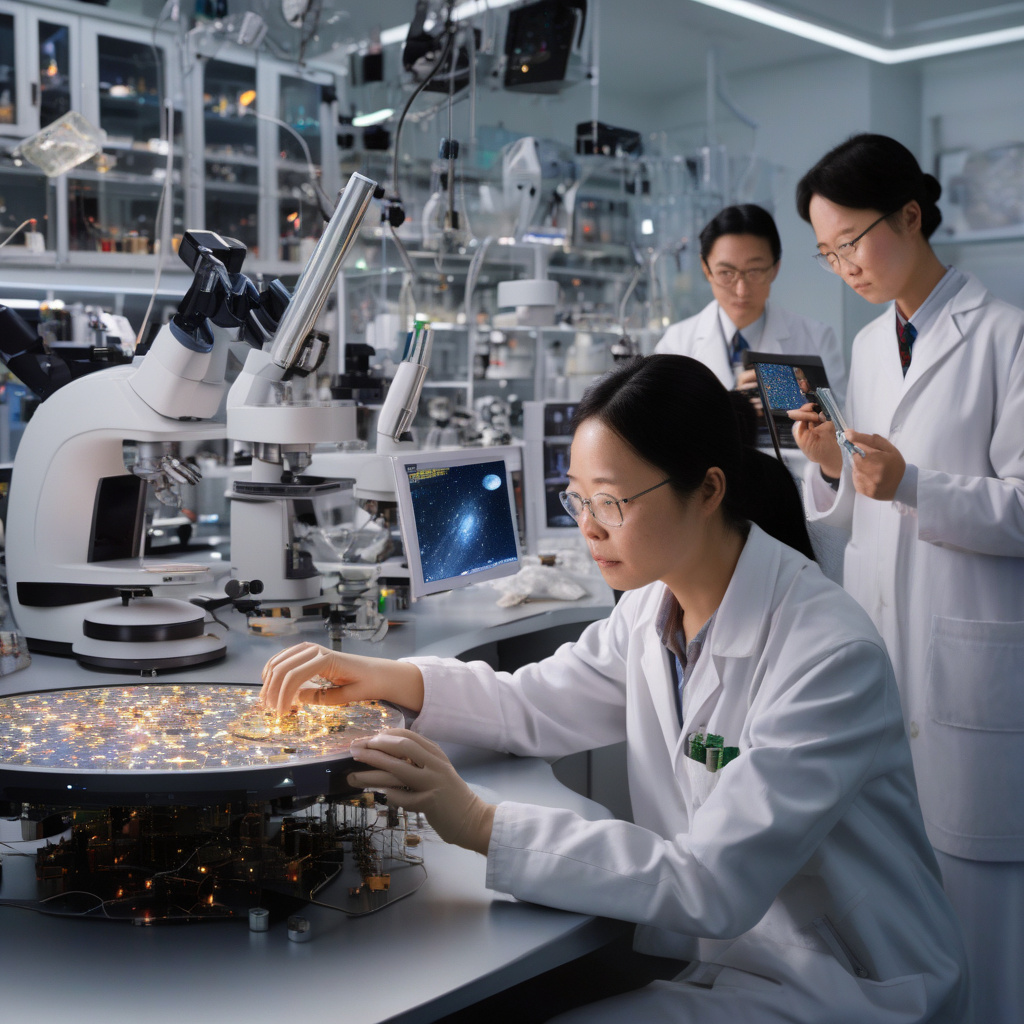“Fingernail-Sized Chip Maps 5,600 Stars in Seconds: A Breakthrough in Astronomy Technology”
Imagine a device no bigger than a fingernail that can see the world, and the universe, in ways never imagined before. Chinese scientists have recently developed a groundbreaking technology in the field of astronomy – a tiny chip that can map a staggering 5,600 stars in just a matter of seconds. This remarkable achievement is set to revolutionize the way we observe and understand the cosmos, opening up new possibilities for space exploration and research.
The chip, developed by a team of researchers at the University of Science and Technology of China, is equipped with advanced sensors and imaging capabilities that allow it to capture high-resolution images of thousands of stars simultaneously. By leveraging cutting-edge technology, including artificial intelligence and machine learning algorithms, the chip is able to process vast amounts of data in real-time, providing astronomers with unprecedented insights into the celestial bodies that populate our night sky.
One of the key advantages of this innovative technology is its compact size, which enables it to be deployed on small, cost-effective satellites that can be launched into space with relative ease. This opens up new possibilities for conducting large-scale sky surveys and mapping missions, allowing scientists to gather data more efficiently and at a fraction of the cost of traditional methods.
In addition to its impressive speed and efficiency, the fingernail-sized chip also offers a level of accuracy and detail that far surpasses current astronomical imaging techniques. By providing astronomers with a comprehensive map of thousands of stars in a matter of seconds, this technology has the potential to revolutionize our understanding of the universe and unlock new discoveries about the nature of galaxies, star systems, and planetary formations.
Furthermore, the development of this chip represents a significant milestone in the ongoing efforts to advance space exploration and research. By streamlining the process of data collection and analysis, scientists can now conduct more comprehensive studies of the cosmos, leading to breakthroughs in our understanding of fundamental astrophysical phenomena.
As we look to the future, it is clear that innovations such as the fingernail-sized chip developed by Chinese scientists will play a crucial role in shaping the next generation of astronomical research. By pushing the boundaries of technology and expanding our capabilities in space exploration, we are paving the way for new discoveries and insights that will deepen our appreciation of the vast and wondrous universe in which we live.
In conclusion, the development of a fingernail-sized chip that can map 5,600 stars in seconds represents a major leap forward in the field of astronomy. With its unprecedented speed, accuracy, and efficiency, this groundbreaking technology promises to revolutionize the way we explore and understand the cosmos, opening up new possibilities for scientific discovery and space exploration.
stars, astronomy, technology, space exploration, innovation.












